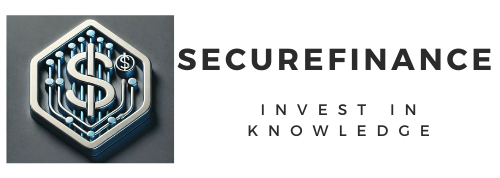
When you’re looking to apply for a loan, understanding how to avoid common mistakes can significantly impact your chances of approval. A successful loan application isn’t just about paperwork; it’s about strategy, preparation, and attention to detail. Learning what to avoid can set you up for success and potentially secure you a better loan with favorable terms. Here’s a comprehensive guide on how to avoid common mistakes when applying for a loan.
Why Loan Applications Are Often Denied
Lenders deny loan applications for a variety of reasons, and understanding these can help you avoid rejection. The most common causes of denial include:
- Low Credit Scores: Lenders often look at credit scores to assess financial reliability. A low score may indicate high risk.
- Insufficient Income: If lenders deem your income insufficient to cover loan payments, they may deny your application.
- Inconsistent Employment: Lenders often favor applicants with a stable employment history, as it suggests reliability and steady income.
Understanding Different Types of Loans
Knowing the right type of loan for your needs can help you avoid unnecessary costs and complications. Common loan types include:
- Personal Loans: Generally unsecured, often used for debt consolidation or personal expenses.
- Auto Loans: Secured by the vehicle itself, typically used for car purchases.
- Mortgage Loans: Used for home purchases and require collateral (usually the home).
- Business Loans: Designed for business purposes, often requiring a detailed business plan.
Each loan type has unique requirements, interest rates, and terms, so choose the one that aligns with your goals.
Assessing Your Financial Readiness
Before applying for a loan, it’s crucial to assess your financial health. This means:
- Evaluating Your Income: Ensure your income is stable and sufficient to make monthly payments.
- Calculating Debt-to-Income Ratio: Lenders use this ratio to assess risk. A lower DTI ratio increases approval odds.
- Setting a Budget: Determine how much you can realistically afford to borrow based on your monthly expenses.
Assessing financial readiness helps you apply for a loan that you can comfortably repay, reducing the risk of default.
Importance of Researching Lenders
Not all lenders are created equal. When researching potential lenders, consider factors such as:
- Interest Rates: Compare rates among lenders to find competitive options.
- Fees and Hidden Charges: Read the fine print to avoid unexpected costs.
- Reputation: Check customer reviews and ratings to ensure the lender is reputable.
Choosing the right lender can make a significant difference in loan affordability and your overall borrowing experience.
Checking Your Credit Score
A good credit score improves your chances of loan approval and may lead to lower interest rates. To avoid credit-related pitfalls:
- Review Your Score in Advance: This gives you time to improve it if necessary.
- Address Any Errors: Inaccurate information can harm your score. Contact credit bureaus to correct errors.
- Pay Down Existing Debt: Reducing debt can positively impact your score and demonstrate financial responsibility.
Regularly checking and managing your credit score ensures it accurately reflects your financial health.
Avoiding Misrepresentation of Information
Accurate and honest information is essential on loan applications. Misrepresentation or inaccuracies, even if unintentional, can lead to:
- Immediate Rejection: Lenders may reject your application if they detect inconsistencies.
- Legal Consequences: Misrepresentation may lead to fraud charges.
- Harm to Future Applications: A rejected application can make future approvals more challenging.
Always review your application carefully to avoid any inaccuracies that may appear as red flags.
Common Documentation Mistakes
Many loan applications require extensive documentation, and simple mistakes can delay or derail the process. To avoid these pitfalls:
- Double-Check Requirements: Ensure all requested documents are provided and are up-to-date.
- Provide Clear Copies: Blurry or unreadable documents can result in delays.
- Organize Financial Statements: For business or mortgage loans, detailed statements of income, assets, and liabilities may be required.
Accurate documentation presents you as a prepared and reliable borrower, increasing approval chances.
Understanding Loan Terms and Conditions
Loan terms can contain complex clauses, so it’s essential to understand what you’re signing up for. Some key areas to focus on are:
- Interest Rates: Fixed or variable rates affect your payment amounts over time.
- Repayment Periods: Longer periods mean lower payments but more interest over time.
- Fees and Penalties: Some loans have prepayment penalties, so be sure to understand any additional charges.
Understanding these terms ensures you’re well-informed and won’t face unexpected costs later on.
Avoiding Over-Borrowing
It can be tempting to borrow more than you need, but this often leads to financial strain. Consider:
- Calculating Real Needs: Borrow only the amount necessary to meet your specific goals.
- Avoiding Debt Accumulation: Over-borrowing can lead to a cycle of debt that’s hard to escape.
Being conservative with your borrowing amount reduces financial stress and keeps repayment manageable.
The Role of Collateral in Secured Loans
For secured loans, collateral is required to mitigate the lender’s risk. To avoid issues with collateral:
- Understand What Qualifies: Common collateral includes property or assets of significant value.
- Ensure Asset Stability: The value of your collateral should not depreciate too quickly, as this could jeopardize your loan.
- Evaluate Risks: Defaulting on a secured loan can lead to asset loss, so ensure you can meet repayments.
Knowing what’s at stake helps you manage risks effectively when securing a loan.
You Can Also Read : How to Create a Will to Protect Your Family’s Future
Evaluating Interest Rates and Fees
Interest rates directly impact the overall cost of your loan, and hidden fees can add up. Here’s how to evaluate these costs:
- Compare Across Lenders: Don’t settle on the first rate offered—shop around for better deals.
- Understand APR vs. Interest Rate: APR includes fees, so it’s a more accurate measure of loan costs.
- Watch for Hidden Charges: Some lenders add application, origination, or early repayment fees.
By thoroughly evaluating these costs, you’ll ensure you’re not caught off guard by unexpected expenses.
